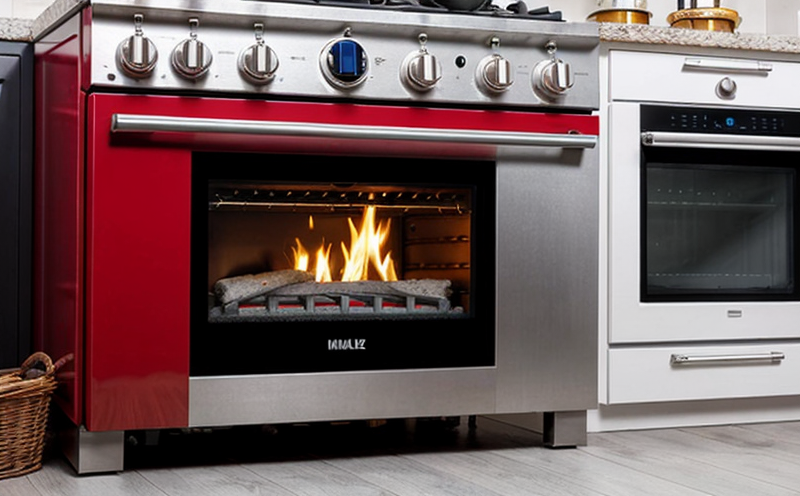Toxic Gas Emission Analysis During Appliance Fires
In the realm of fire safety testing, particularly within household appliances, understanding and managing toxic gas emissions is paramount. Toxic gases released during appliance fires can have severe health implications for both consumers and emergency responders. This service focuses on analyzing these potentially hazardous compounds to ensure the safety and compliance of products with relevant international standards.
Our laboratory employs advanced analytical techniques to identify and quantify various toxic gases like carbon monoxide (CO), nitrogen oxides (NOx), hydrogen cyanide (HCN), and others that can be produced during an appliance fire. The analysis is conducted using state-of-the-art gas chromatography-mass spectrometry (GC-MS) systems, which provide precise data on the composition and concentration of emitted gases.
For effective testing, we require a sample of the appliance in question to simulate real-world conditions as closely as possible. This includes ensuring that the fire simulation parameters are representative of typical operational failures or accidents. Once the test is conducted, our experts generate detailed reports outlining the types and concentrations of toxic gases detected.
Our team works closely with quality managers, compliance officers, R&D engineers, and procurement specialists to ensure that these analyses meet not only regulatory requirements but also exceed customer expectations. By leveraging this service, stakeholders can gain valuable insights into product safety, making informed decisions about design modifications or material selections to reduce risks.
In summary, our toxic gas emission analysis during appliance fires provides a comprehensive evaluation tool for ensuring the highest level of fire safety and compliance with international standards such as ISO 9240-1:2018. Our approach ensures that products are not only safe but also contribute positively to public health.
Applied Standards
| Standard | Description |
|---|---|
| ISO 9240-1:2018 | This standard specifies the method for determining the release of toxic gases from domestic appliances during a fire. It covers the setup, procedure, and interpretation of results. |
| ASTM E575-16 | American Society for Testing and Materials standard that provides guidelines on flammability testing of household products. |
| EN 458:2019 | This European standard sets out the requirements for fire safety in domestic appliances, including toxic gas emissions. |
| IEC 60335-2-80:2016 | The International Electrotechnical Commission's standard that deals with electrical equipment and devices for household use. |
The standards mentioned above provide a framework for our testing methodologies, ensuring consistency and reliability in the analysis of toxic gas emissions. By adhering to these guidelines, we ensure that our clients receive accurate and trustworthy results.
Industry Applications
In the context of household appliances, fire safety is critical not only for consumer protection but also for brand reputation and regulatory compliance. Our toxic gas emission analysis plays a crucial role in various industry applications:
- Product Development: Early-stage testing allows R&D teams to identify potential hazards early, facilitating safer product designs.
- Compliance Assurance: Ensures that products meet stringent fire safety and toxic gas emission standards set by regulatory bodies like the European Union (EU) and North American authorities.
- Market Access: Meeting these standards is essential for entering new markets where strict regulations are in place.
- Risk Management: Provides data on potential risks, enabling companies to implement preventive measures effectively.
The insights gained from this analysis can lead to significant improvements in product performance and safety, ultimately contributing to a safer environment for users and operators.
Quality and Reliability Assurance
At our laboratory, ensuring the highest quality and reliability of our testing services is non-negotiable. We employ only highly trained professionals who are certified in their respective fields. Our equipment is regularly calibrated to ensure accuracy, and we follow strict protocols to minimize human error.
The reproducibility of results is a cornerstone of our operations. We maintain detailed records of all tests conducted, including sample preparation, test conditions, and data analysis. This transparency allows stakeholders to have confidence in the integrity of our findings.
We also offer ongoing support through post-test consultations, where we interpret the results for clients, offering recommendations based on industry best practices. Our commitment to excellence extends beyond just conducting tests; it encompasses providing actionable insights that drive continuous improvement within your organization.





